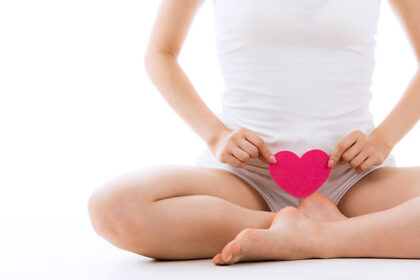Swelling is something most of us face at some point, whether it’s a twisted ankle, puffy hands after a hot day, or more persistent fluid build-up linked to certain health conditions. The medical term for swelling is “oedema”, which simply means an accumulation of fluid in the body’s tissues. While it can be harmless and temporary, swelling can also be uncomfortable and sometimes signal an underlying health issue.
Thankfully, many natural approaches can help reduce swelling. Whether you’re managing a minor injury at home or looking to ease fluid retention caused by other factors, these strategies can make a real difference. Let’s explore how you can tackle swelling with simple, natural methods – and also look at cases like hydrocele, where a build-up of fluid needs careful attention.

What causes swelling?
Swelling happens when fluid leaks from your blood vessels into nearby tissues. Your body does this as part of its normal response to injury or inflammation. Common reasons include:
- Injuries: A sprained ankle, pulled muscle, or bruised knee often leads to local swelling as your body tries to protect and heal the area.
- Heat and standing for long periods: Warm weather and gravity can draw fluid into your legs and feet.
- Hormonal changes: Many women notice puffiness before their period due to shifts in hormone levels.
- Diet high in salt: Salt causes your body to hold on to extra water.
- Health conditions: Kidney, heart or liver problems can lead to more generalised fluid retention.
One type of swelling you might not immediately think of is a hydrocele, where fluid builds up around the testicle. It’s common in babies but can also occur in adult men.
Natural ways to reduce swelling from minor injuries
If you’ve rolled your ankle or knocked your hand, your body responds by increasing blood flow and sending healing cells to the area, which causes swelling. Here’s how to help it settle naturally.
Rest and gentle movement
It’s tempting to push through, but resting helps prevent more damage. That said, don’t keep completely still for too long. Gentle movements encourage blood flow and stop the joint from becoming stiff.
Cold therapy
A simple cold pack (or a bag of frozen peas wrapped in a tea towel) placed on the swollen area for about 15–20 minutes every couple of hours can reduce inflammation and numb discomfort. Avoid placing ice directly on your skin.
Compression
An elastic bandage can help limit swelling. Be careful not to wrap it too tightly – your toes or fingers shouldn’t feel numb or turn blue.
Elevation
Raising the swollen limb above the level of your heart encourages fluid to drain away. Prop your leg up on cushions when you’re resting, for example.
Natural ways to ease general fluid retention
Sometimes swelling isn’t due to an obvious injury. You might notice rings feel tighter, your shoes pinch by evening, or your face looks puffier than usual. If your swelling is mild and not caused by a serious condition, you can often help it by adjusting your lifestyle.
Stay hydrated
It might sound strange, but drinking plenty of water actually helps prevent water retention. When your body senses dehydration, it clings on to fluid. Aim for six to eight glasses of water daily.
Cut back on salt
Too much salt makes your body hold on to water. Try flavouring your food with herbs, lemon juice or spices instead of reaching for the salt shaker.
Eat foods rich in potassium
Potassium helps balance the amount of fluid in your body. Good sources include bananas, sweet potatoes, spinach and beans.
Keep moving
Sitting or standing for hours encourages fluid to pool in your legs and feet. Try to get up and walk around regularly, or do simple foot pumps and ankle circles at your desk.
Try gentle massage
Using firm, smooth strokes towards your heart can help move fluid along. If swelling is in your legs, start at your ankles and work upwards.
Supporting circulation naturally
If you often deal with mild swelling in your legs, improving your circulation can help. Consider:
- Wearing loose clothing that doesn’t restrict blood flow.
- Avoiding long hot baths or saunas, which can cause veins to dilate and worsen swelling.
- Putting your feet up at the end of the day, ideally above heart level.
- Trying herbal teas such as dandelion or parsley, which are gentle diuretics and may help your body shed excess fluid.
Always check with your doctor before using herbal remedies, especially if you take other medication.
When swelling needs medical attention
Most swelling from minor injuries or mild fluid retention improves with these simple steps. But sometimes it’s a sign of something more serious. See a doctor promptly if you notice:
- Swelling that comes on suddenly, is severe, or affects just one leg (this could point to a blood clot).
- Shortness of breath along with swollen legs (could indicate heart or lung problems).
- Swelling that doesn’t improve after a few days of self-care.
- Painful, swollen skin that feels hot and looks red (might be an infection).
A closer look: natural approaches to hydrocele
A hydrocele is a pocket of fluid that collects around the testicle. In baby boys, it often disappears on its own within the first year. Adult men can develop a hydrocele due to injury, inflammation or sometimes without a clear cause. It might feel like a soft, smooth swelling in the scrotum that’s usually painless.
Many men look for natural remedies for hydrocele to avoid surgery. While small hydroceles that aren’t causing discomfort can often just be monitored, there’s limited evidence that lifestyle changes or home treatments can shrink a hydrocele. However, some men try to reduce general swelling by:
- Wearing supportive underwear to ease dragging sensations.
- Using cool compresses to help with any mild discomfort.
- Eating an anti-inflammatory diet rich in fruits, vegetables and omega-3 fats.
For more information on ways you might support your body, including discussions of herbs and nutrition, you can explore this dedicated piece on natural treatment for hydrocele. Do keep in mind, though, that large or growing hydroceles often need a straightforward surgical procedure to drain the fluid or seal the sac that’s causing the build-up.
How stress and sleep affect swelling
You might not immediately link stress or sleep with swelling, but both can have an impact. Stress hormones like cortisol encourage your body to hold on to sodium and water. Meanwhile, poor sleep disrupts the hormones that regulate fluid balance.
- Try relaxation techniques such as slow breathing or gentle yoga.
- Aim for 7–9 hours of sleep each night to support your body’s natural repair processes.
Foods that may help reduce swelling
Certain foods have natural anti-inflammatory properties or act as mild diuretics. Including more of these in your meals may help reduce water retention and inflammation.
- Berries, cherries and citrus fruits provide antioxidants that calm inflammation.
- Cucumbers and watermelon have a high water content and encourage hydration.
- Celery and asparagus act as natural diuretics.
- Nuts and seeds, especially walnuts and flaxseeds, provide healthy fats that reduce inflammation.
Keep your meals balanced, and avoid crash diets, which can actually cause your body to cling to water.
Simple home routines to keep swelling at bay
Here’s a summary of habits you can weave into your daily life to help prevent or reduce swelling naturally:
✅ Drink enough water throughout the day.
✅ Move regularly, stretch, and avoid sitting still for long periods.
✅ Reduce salty and processed foods.
✅ Enjoy more potassium-rich fruits and vegetables.
✅ Elevate your legs when resting.
✅ Use cool compresses on swollen areas.
✅ Try gentle massage towards the heart.
✅ Wear comfortable, non-restrictive clothes.
Final thoughts
Swelling is often just a sign that your body is working to protect or heal itself. In many cases, you can ease it naturally with simple steps like resting, staying hydrated, moving more and adjusting your diet.
However, always listen to your body. If swelling is severe, persistent, painful or accompanied by other symptoms like breathlessness, seek medical advice without delay. And for conditions such as hydrocele, while there’s interest in natural remedies for hydrocele, it’s best to speak to a healthcare professional who can guide you on whether watchful waiting, lifestyle measures or a minor procedure is most suitable for you.
Taking small, consistent steps can support your body’s natural balance and help you feel more comfortable day to day. Whether it’s a swollen ankle after a weekend hike or mild puffiness from standing all day, these natural methods give you practical ways to feel better without always reaching straight for medication.



